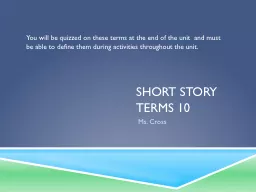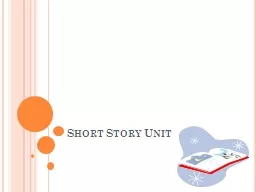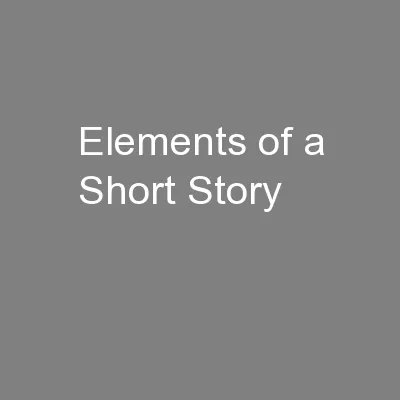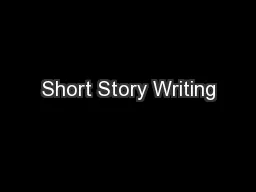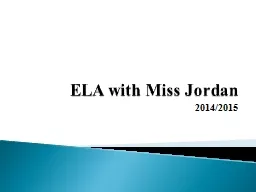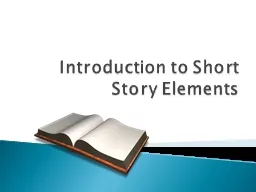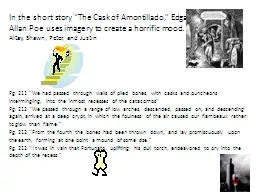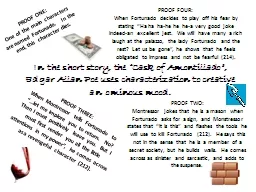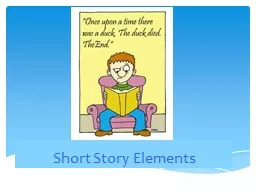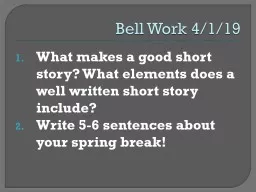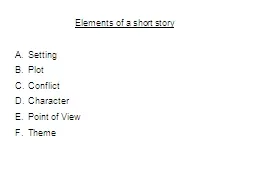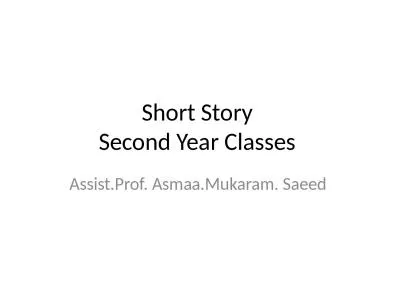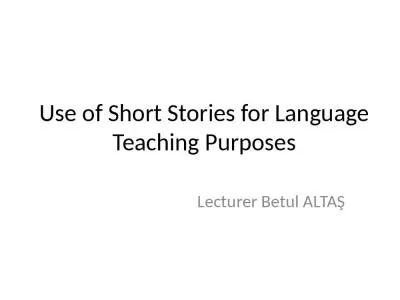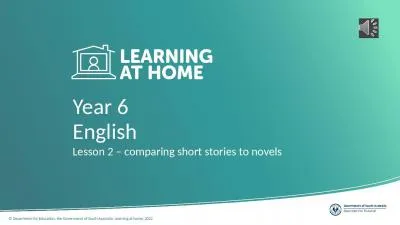PPT-Short Story Terms 10
Author : alida-meadow | Published Date : 2017-03-18
Ms Cross You will be quizzed on these terms at the end of the unit and must be able to define them during activities throughout the unit Short Story A fictional
Presentation Embed Code
Download Presentation
Download Presentation The PPT/PDF document "Short Story Terms 10" is the property of its rightful owner. Permission is granted to download and print the materials on this website for personal, non-commercial use only, and to display it on your personal computer provided you do not modify the materials and that you retain all copyright notices contained in the materials. By downloading content from our website, you accept the terms of this agreement.
Short Story Terms 10: Transcript
Download Rules Of Document
"Short Story Terms 10"The content belongs to its owner. You may download and print it for personal use, without modification, and keep all copyright notices. By downloading, you agree to these terms.
Related Documents

